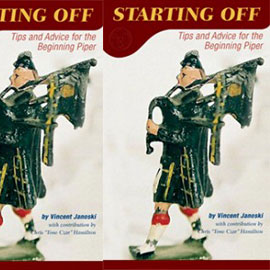Bagpipe Competition Extinction Events
 Andrew Berthoff’s recent excellent blog post is spot on and covers a topic that should get more attention on a regular basis. If anything it should constantly be on the minds of every bagpiper and drummer who cares about sustaining the craft of organized bagpiping and drumming competition. If Ontario, Canada, with its high proportion of Scottish descendants, can complain about waning interest in Highland games and its cultural trappings, how do you think American Highland games fare?
Andrew Berthoff’s recent excellent blog post is spot on and covers a topic that should get more attention on a regular basis. If anything it should constantly be on the minds of every bagpiper and drummer who cares about sustaining the craft of organized bagpiping and drumming competition. If Ontario, Canada, with its high proportion of Scottish descendants, can complain about waning interest in Highland games and its cultural trappings, how do you think American Highland games fare?
Highland games in the USA walk a razor’s edge every year, hoping they have the funding and interest to continue to host their annual events. Even some of the longest running events in the eastern half of this country are one rainy Saturday away from extinction. That is not hyperbole.
Knowing or talking to people who are directly involved with organizing and running various aspects of Highland games and bagpipe competitions, you quickly appreciate the amount of time, money, and anxiety at work. To expect volunteers at various festivals and games (and many of them non-pipers and drummers to boot) to take on this burden year after year is too much to ask at the scale some of these events have reached. The model under which we operate here in the east is unsustainable and is showing consistent signs of cracking under the strain.
Let’s run some basic numbers. A decently sized Highland games can attract 35 pipe bands and 150 solo competitors across all grades and disciplines. The same piping and drumming segment of this Highland games alone could cost upwards of $20,000 to $30,000 to host. That is a significant $162 per competing entity needed to just break even. Last time I checked, the average entry fee was about $30 at the high end. Keep in mind that that is a $132 shortfall per individual competing entity that needs to be made up by more ticket-buying spectators. At a $15 gate entry, that is about eight more spectators for everyone competing—1,628 people total—just to break even on the piping and drumming alone. Bearing in mind the fact that the ticket price is also offsetting other aspects of the event that cost money, many more additional spectators than just 1,628 are actually needed to make up the difference. And that is just for the piping and drumming competitions. That is a heavy duty obligation and one that many games would happily give up. All they need is a reason.
Now, some might say that a piping and drumming event at that scale would be essential for bringing in a higher gate; that the various ticket-buying family members and ticket-buying public are thus more enthusiastic and would otherwise stay home without them. Any hard look at the books of a decently run and sized games like this tells a completely different story. First, the people are staying home anyway and this shows itself in declining gate year over year. Second, folded into the overall financials of the event, piping and drumming competitions are a losing proposition and fall more in the category of “overhead expense” rather than “income.” The event itself can do that much better and be at less risk of extinction without competitions. The question for many games then becomes not “How do we make our piping and drumming competitions better?” but “Why do we continue to run these piping and drumming competitions at all?” Believe me, it is a question asked by games committees every year.
Yet, you wouldn’t know that from our end of things. Each year you will hear the boasting: “The EUSPBA sanctioned a record eleventythirty games this year!” “The EUSPBA sanctioned more games than ever!” But that kind of hubris comes on the backs of all the nonprofit games committees who are willing to lose money in order to be “sanctioned” by an association that gives many pipers and drummers a reason to travel out on a summer Saturday. If EUSPBA “sanctioning” carries so much weight, how about “sanctioning” some creative approaches that relieves the games of some of the burden?
It is high time the EUSPBA started using its cultural and fiscal capital in a way that creates a new, sustainable model for the competitions in its purview before a true “extinction event” occurs. Forty some-odd years ago, the EUSPBA was a loose collection of expatriate Scots and Scots-Americans trying to organize bagpipe competitions. They were happy to rely on the largesse of the regional Highland gatherings who were more than happy to attract more bagpipers. Today, that same organization boasts more than two thousand members in twenty-four states with a consistent revenue stream. The organization is simply too large and unwieldy to expect the same games and festivals to keep supporting it the same way. In keeping with its mission, the EUSPBA is perfectly positioned to host, organize, and fund bagpiping events that matter to the greater community. There is no better way to promote the art of playing bagpipes and drums.
And that community is more than willing to step up and help make it happen. Who better to do the promoting than the very same pipers and drummers who stand to benefit?
 Pipehacker
Pipehacker








